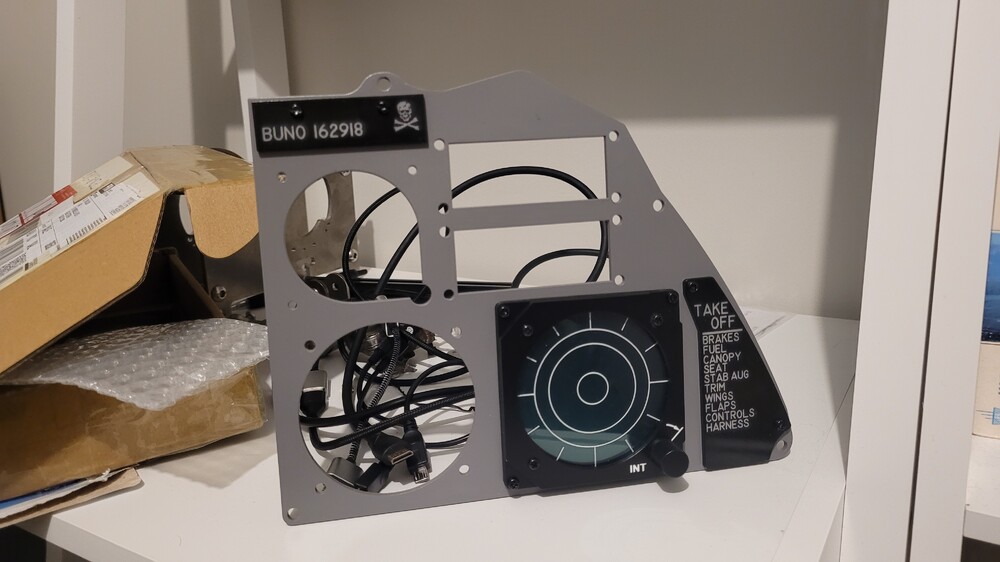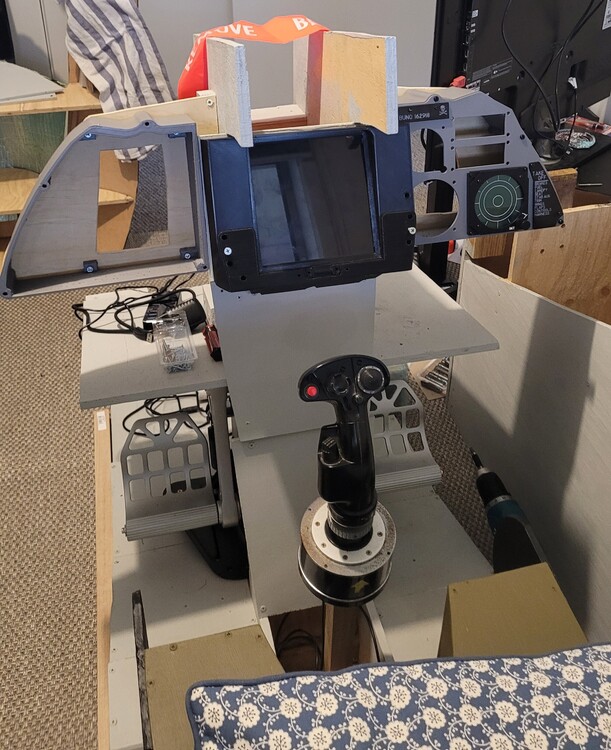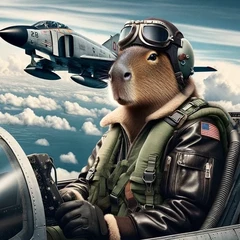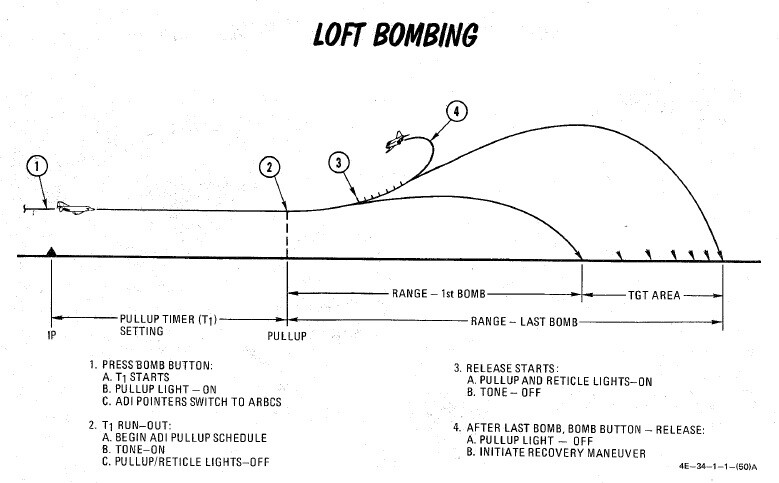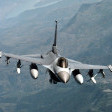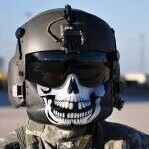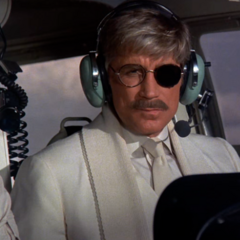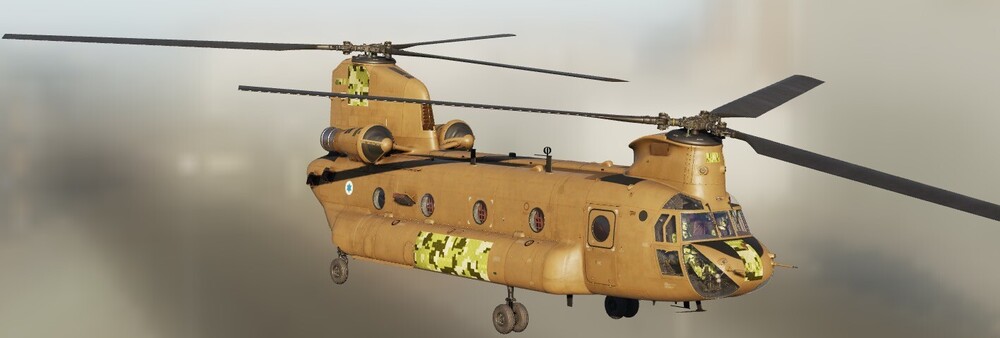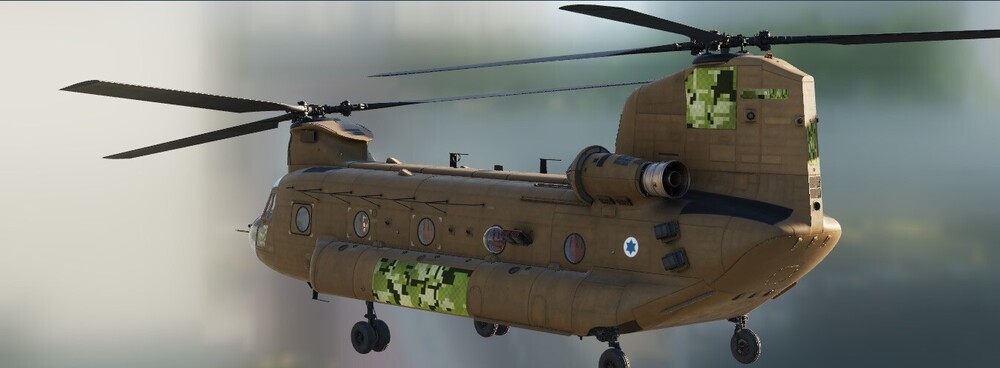Leaderboard
Popular Content
Showing content with the highest reputation on 08/25/24 in all areas
-
Military Asset Pack UK 1.1.0 released! Changelog Version 1.1.0 Added AS-90 SPG Added Ajax CRV Added Challenger 2 MBT Added Challenger 3 MBT desert livery Added Land Rover WMIK (M2) Added Land Rover WMIK (MK19) Added Land Rover Wolf LUV Added Scimitar CRV Added Scorpion LT Added Sky Sabre C2 Added Sky Sabre Giraffe AMB STR Added Sky Sabre iLauncher LN Added Stormer HVM VSHORAD Added Type 26 pennant number liveries Added Warrior IFV Fixed Challenger 3 MBT sensor issue due to DCS update Fixed Mk45 Mod 4 train limitations Fixed Type 26 Mk 45 Mod 4 rotation limits Fixed Type 26 wrong mass issue Fixed Type 45 wrong mass issue Fixed all ships damage values Distribution model This Military Asset Pack is available in the following versions: The standard full download. Remove old asset pack version and unzip this in your Saved Games mods\tech folder. The incremental download which updates your full download and contains only the changed files. You apply it by overwriting your full download installation. Special thanks A big thanks goes out to @daskjdhjah for a tremendous testing effort! Also thank you @HighMaintenanceB for the added Type 26 hull number liveries! And a special thank you to @HE5405 for making the meshes for the Sky Sabre iLauncher, Land Rover Wolf and Land Rover WMIK!19 points
-
Whether it's the MT or SP version there is clearly a performance problem and it's really a problem in our squadron we are quite numerous to deplore the current performance drops; and we see pilots taking a break towards War thunder or other games.. In short the new maps or the new modules should become secondary in the face of the optimization in fps and fluidity of the simulator. This is becoming urgent.9 points
-
Been wanting to cover this for a while to clear some things up. I am 47Driver on YouTube, some of you have been watching my videos on the DCS CH-47F, (I really appreciate that), and everybody wants to know about all these weird acronyms that I mention, along with many others. First of all I want to point out something in regards to the flight model. I see a ton of complaints about how unrealistic it is, etc. Yes, the FM is very WIP and that is what it is. Tandem Rotor physics are straight up wizardry. This is far and away the most complex flight model that ED has ever tried to replicate, and I can say that confidently as an actual Pilot of this aircraft and someone who understands a fair bit about aerodynamics. Tandem rotor helicopters are very weird, and what I'm seeing in the flight model so far indicates that the devs have done their research on how these helicopters behave when none of the things that are built in to help you fly are working, which is true in the module's current state. Please keep that in mind as you fly this thing. AFCS: Automated/Advanced Flight Control System. This alone is what makes the Chinook so easy to fly. Put your feet flat on the floor, don't touch the pedals, and fly all day long. Thanks Turn Coordination. She's very smooth, steady, coordinated, and controllable when this system is on. When the AFCS in DCS is fully fleshed out, it's gonna make a huge difference. DAFCS: Digital Advanced Flight Control System. Super cool autopilot(ish) functionality. Basically allows us to capture current Inertial Altitude or Radar Altitude, maintain low speed over the ground via TRC or Translational Rate Command, or capture current position over the ground via P-Hold. P-Hold + Altitude mode = perfect hands off hovering. We also have a full 4 axis autopilot via Flight Director for cruise/instrument flight. DASH: Differential Air Speed Hold. As you increase speed, the DASH, (a long tube in the flight controls with an actuator on each end) will decrease in length. You'll notice eventually when this is modeled that as you increase speed, you'll actually start moving cyclic backwards towards center and the aircraft will keep the speed. Pretty nice and allows us to fly with a more neutral cyclic position. LCT: Longitudinal Cyclic Trim (Actuators). As speed increases, the LCTs will extend, this will increase forward tilt in both the fwd and aft heads. Allows a more level fuselage at cruise and reduces stress on rotor system. You'll be flying at 140kts and the fuselage will be completely level with the horizon. No more staring at the ground 10deg nose low anymore. When you land, the LCTs drive to the GND position, allowing easier ground taxi. When you hover, they drive to the RET position to facilitate a level hover attitude. DCP: Differential Collective Pitch. This is mostly why the Thrust Lever is called the Thrust Lever and not a collective. DCP comes from longitudinal cyclic input. Forward cyclic increases collective pitch on the aft rotor system while decreasing collective pitch on the fwd, and vice versa. So basically, the cyclic is also a collective... Hope this clears some things up and helps you folks understand why the flight model feels so weird right now. With most of these things not being implemented yet, because I'd imagine they're all very hard to simulate, the Chinook is gonna fly a little weird. I'm still having a great time with the module and I'm very excited for more systems depth to be added, so I can continue to share with you guys. Thanks! 47Driver8 points
-
Status update The UK asset pack update is progressing rather quickly and without any major hiccups. We're in final testing at the moment and if nothing major surfaces I plan on releasing the update shortly. I also want to give a big shout out to @HE5405 for creating the meshes for the Sky Sabre iLauncher, Land Rover Wolf and Land Rover WMIK. Great work! Here is a screenshot of the latest addition, a 40 mm AGL version of the WMIK.6 points
-
After the UK asset pack update release, I will most likely make a round of maintenance/fix updates for all packs besides the Germany and UK packs. Because things have changed in DCS, which I have to address. When that is done I shall decide which pack is next in line for additions.5 points
-
Just finished playing it (took exactly 10 days of addiction) and loved every mission of it. I found it almost bug free (only once in the 4vunk number 1 and 2 crashed in two each other at the initial for rwy 8, but that's not the campaign's fault). I played it right after reading Top Gun from Yank, and the immersion was superb, love how every campaign you bring out is a new masterpiece that raises the bar to new unimaginable heights. AI management in this one must have been a nightmare. Congrats! Can't wait for the hinted new Air Force F-4 Campaign. Surely a red flag, hoping for a deployment in the Mariannas or Kola afterwards. A few shots from the campaign On the way to INS (brutally lost to the Air Force's F-4) The egg! (or the start of it) Didn't think the 86 could be a fearsome opponent if not fought in the right way Shack! Live missile firing today I promise not to show this to anyone4 points
-
I'm working to clean up my mod to avoid conflicts with other mods, if you have bugs don't hesitate to send me your log file to help me with the bugs thank you.4 points
-
Designing the Drone UI for our SU-57, its rather simple at the moment thru the knee board, i will work on a better layout but this is a Start. Drone AI will be your companion thru your missions: Plan missions Request area coverage Ask it any dcs related topic Request best weapon loadouts for missions and more4 points
-
Good news! I liked this idea so much, I made one! I have a lot of stone type building edms sitting idle This idea gives them new life! I am posting this here, to stay OT, But will create a dedicated thread if I expand upon this idea. Your vote counts! To that end, I present, The Armed Egypt Structure With a Sniper on the roof! I have made no collision yet If you all like it, and it works as advertised, I most certainly will! It works best using line of site I have not tested how far his range is I do see him do kills, one shot! Credits are needed To The Admiral, whose code I used for this version. Thank you my friend! I trust you are on the mend It would be wise to place this link in the first post so all can find it without searching Threads can get busy! The OP needs to do this And speaking of, @fargo007 What you have gone and done? My thanks to you as well! Hi Stratos! Good luck, and good shooting! https://www.dropbox.com/scl/fi/g0bzro3ayxlp751c29zy1/Middle-Eastern-Armed-Structure-V1.0.0.zip?rlkey=q2sxtuhdeuy8lv3uyqumtfzih&st=nr7ql4r9&dl=0 If you like what you see, Please consider making a donation to the Admirals coffers Find this Donation link in his thread Thanks!4 points
-
Good Morning everyone, thanks for your interest but I've gotten some really great feedback from the initial four testers. With that said I will take some extra time and correct the small issues that were noticed. It was also brought to my attention that the FREMM Frigates carry Cruise missiles so I will incorporate them along with more anti-ship missiles. banana888999, ienatom, and PorcooRosso86. Once I have corrected all the issues. I will send the mods to you three for testing. I will reach out to you all once I'm finished. Thanks for your interest. Hey Tmansteve, check your messages. Thanks for the feedback. All please replace the existing GT.exhaust code at line 51 with the code below in the rebel_ship_oscar.lua file. Thanks. GT.exhaust = { [1] = { size = 0.30 , pos = {-55.89, 21.396, 0.0 } }, [2] = { size = 0.30 , pos = {-55.89, 21.396, 0.0 } }, } Thanks everyone for your patience.4 points
-
4 points
-
Working on the maintenance updates for all the asset packs. First out is the China pack. I'm adding case ejection. That's a great amount of casings.3 points
-
3 points
-
3 points
-
3 points
-
I really hope for a mig-21bis upgrade, something similar to the a-10c2 and ka-50iii, and I agree they have to prioritize it: maybe just after the f4d but surely before a ceii upgrade. Unfirtunately, since leatherneck split in HB and M3, the former developed f-14 and f-4 phantom, and the latter just the ceii, so I'm not so confident.3 points
-
So you would like to shoot the AGM-45 Shrike off of your shiny new Phantom and LARP that you are an F-4G or a Wild Weasel of yore. The first thing thats probably on your mind after playing around with it is probably “this missile is broken” and “how the hell does it work even”. Hopefully this guide can help clear up some of the confusion about the original Wild Weasel anti-radiation weapon and help you figure out how to use it in DCS. How the AGM-45 guides Everybody is probably wondering about the new seekerheads you can select with the arming and rearming menu, but first lets start with the basics. How does the AGM-45 actually fly to its target. “Its just an ARM” you say, “if it sees the emission of its target it should guide on it.” Yes and no. There are several things that have to occur for the shrike to guide. Lets start with an overview of the Shrike itself. The seeker The seeker is a passive Radio Frequency seeker that has a 45 degree field of view in DCS and a 150 second operating time, the seeker is on once the shrike is armed and will give you a high pitched tone, similar to a sidewinder, that indicates when it is tracking something inside its field of view. This tone may stutter or change as the emitter that the seeker is tracking rotates or changes modes. Once launched the seeker is always tracking or attempting to track something that it can see within its field of view. Guidance control The guidance control section is the “autopilot” that gives the commands from the seeker to the fins to steer the missile. This section is not enabled until after launch and certain conditions are met. You can choose the conditions that will enable the guidance control by selecting LOFT ATTACK or DIRECT ATTACK on the rearm fuze selection menu, or in the mission editor. You cannot change these via switchology in the jet (there is an exception but it is not implemented yet. If this changes I will update this to represent this) LOFT ATTACK: This is the most complex set of conditions to enable the guidance control section. The conditions are: Missiles barometric altimeter detects a pressure increase of 1 PSI (~1-3000 feet depending on altitude and temperature) Missiles barometric altimeter sense that the missile is below 18,000ft MSL ONCE BOTH OF THESE CONDITIONS ARE MET THE GUIDANCE CONTROL SECTION WILL UNLOCK and the signals from the seeker will be sent to the control section and the fins. Until these conditions are met the missile will be flying completely ballistic and unguided, even though the seeker may see and be tracking the emitter the entire time. DIRECT ATTACK: With this selected the altitude sensor for the loft attack is bypassed and the guidance control unlocks approximately 3 seconds after launch. This is your “shoot it straight down the throat” guidance control selection. The AGM-45 will naturally roll at approximately 55-60 degrees per second, and the guidance control system does not attempt to stop this once it enables. Additionally the fins only actuate with BANG-BANG control inputs, which you can watch if you observe the missile via F6 after launch. All of this is to say that once the guidance enables the AGM-45 will be corkscrewing and its fins will be BANG-BANGing constantly, which results in a very high potential energy loss once guidance begins. What all this means for employment and range DIRECT ATTACK guidance missiles will have VERY short range, and the depression angle is very important, the more the missile has to glide to the target, the more likely it will just run out of energy and fall extremely short. Recommend trying to fire by getting 20 degrees or more nose down pointed straight at the target, or being right on top of it if firing at low altitude. Both of these will result in very short ranges. LOFT ATTACK guidance however can get quite good range if lofted accurately. The fins remaining locked and the missile flying ballistic until guidance enable allow it to retain much of its energy and usually results in a fairly steep (30-45 degree) descent angle when it enables guidance. However remember that the seeker only has a 45 degree field of view, and the target must be inside that field of view when the guidance section activates (below 18,000 feet and missiles altimeter detects a 1 PSI pressure increase). This means you have to actually get that missile quite accurately to a window above the target when the seeker activates where it can detect it and guide. You can employ a LOFT ATTACK shrike directly pointed at a target or level (not in a loft) as well, and it will get more range due to the fins staying locked for longer, however the missile will not start guiding till much later, so for short range immediate guidance scenarios it may not be the best. With all of that How do you shoot the Shrike in the F-4E Ok so you understand what the DIRECT and LOFT ATTACK modes do, and what the up and downsides of each mode are and what effect they have on the missiles guidance and energy. Now we get to how do you actually Use them in the F-4E. There are 3 modes you can use to employ Shrikes in the F-4E: LABS Loft WRCS Direct WRCS AGM-45 We will cover these three after going through the basic cockpit setup. Basic cockpit switch setup For all these modes you must: Select the station for the shrike(s) you wish to employ Select ARM on the weapon select knob Select one of the 3 modes on the LABS/WRCS knob (LOFT, DIRECT, or AGM-45) (optional) Turn the Flight Director on (if you want the needles on the ADI indicating shrike seeker look angle) (optional) select A/G on the Sight Turn Master ARM on LABS Loft Selecting LOFT on the LABS/WRCS knob will allow the LABS LOFT circuits to fire the shrike automatically. However this works Exactly Like it does for bombs, it simply applies the launch signal to the shrike launchers, instead of a release signal to bombs. So it is setup and used the exact same way. You will need to plan out an IP, a run in time to your loft point, and pick a loft angle, enter them in the LABS computer and timer in the backseat. Once these are entered, you then overfly the IP, hold the pickle button down, point at the target, and follow the ADI needles, as you rotate through the preset loft angle with the pickle button held down, after the expiration of the run in timer, the missile will depart the jet. This mode obviously requires preplanning, and the ability to know ballistically what angle you want to release the shrike at, and at what range to start the loft, and then use this to enter in the run in timer, select an IP and pick a loft angle. None of this is calculated for you, so only via trial and error and practice will you be able to figure out what settings will work for you. For more information about Loft you can also take a look at our manual: Lofting & Tossing WRCS DIRECT Selecting DIRECT on the LABS/WRCS knob makes the selected shrike launch approximately 1 second after you hit the pickle button. That's it. Center up the needles, or dont center up the needles, pickle and the shrike will go on its merry way. There is zero automation, so if you desire to fire the shrike in a loft, you will have to manually pull up based on your own practice and situational awareness. There is also no indication that you are in range or out of range. WRCS AGM-45 Selecting AGM-45 on the LABS/WRCS knob is the “preferred” way of employing the shrike, it will give you ranging indications for the shrike and let you know if you are in range to loft, perform a level release, or a diving release of the shrike. If you want to perform a loft or level release with this mode, you should be using a LOFT ATTACK shrike. The WRCS has no way of knowing which type of seeker guidance you have selected and will always be calculating assuming the LOFT ATTACK logic is occuring. Thus if you fire a DIRECT ATTACK missile following the loft or level release cues, it will probably start guiding immediately, and fall far far short of the target. WRCS AGM-45 makes use of the “target altitude” setting in the computer panel in the WSO cockpit to trigonometrically calculate a ground range to your INS depression angle as displayed on your ADI. Any time your nose is below the horizon it should be calculating the range to where the ADI depression intersects with the set target altitude, if you would like your reticle to match, you need to have it depressed by 35 mils. For the most accurate ranging you will want that target altitude set to a representative altitude of the theater or target area you are pointing at. One interesting use of this is even if you have no shrikes on the aircraft you can select this mode, and if you depress the reticle 35 mils, you can use this to get a range to locations on the ground by pointing at them with the reticle (assuming the target altitude setting is relatively accurate.) This range should be displayed on the range readout on the HSI any time the nose is below the horizon and the calculation is running. The max range this system can calculate out to is 30 miles. This is a limitation of the WRCS, it will not display a range greater than 30 miles. As soon as it calculates a ground range the WRCS will calculate if you are in range for a shrike and if you are in range for a loft, level, or diving release. Indication that you are in range will be one of your AOA indexer lights lighting up to indicate which of these deliveries are available to you. The indications you could get are: Out of range, no lights light up In range with a loft, upward pointing chevron illuminates In range for a level launch, donut illuminates In range for a diving direct launch, downward pointing chevron illuminates Remember these indications are based on your current nose depression angle, and will be calculated and displayed regardless of whether your shrike sees anything, or even if you have a shrike on the aircraft. Only one of these should turn on at any time until you pickle, once you pickle and hold the donut will eventually illuminate to inform you the launch is about to occur. Just to visualize this, if you start out of range to a threat, and fly towards it, with the nose pointed at the target (in a dive), first the loft cue (upward chevron) will illuminate as you get into range for a loft, then once you are close enough for a level launch, the upward chevron should go out and the donut should illuminate. Once you are too close for a level launch and approaching minimum range, the donut should go out, and the dive cue (downward chevron) should illuminate. If you get too close for that, then all the indexer lights should go out. To use the system, select a shrike and point towards a target, once you get a signal and the needles deflect, center up the needles, once you have the needles perfectly centered in your ADI, your ADI should be directly pointed at the targets location and assuming your target altitude in the rear cockpit is somewhat accurate, the calculated ground range and LAR should also be fairly accurate. You could also do this if you visually see a target SAM site or SAM launch, if you know the type and have the correct type of shrike seeker selected, with your reticle set to 35 mils (matching the ADI boresight) you can put the reticle on the target SAM to get your dip ranging as well. Once you have an in range indication (one of the AOA indexer lights has illuminated) with the ADI or depressed reticle centered on the target location. Pickle and hold as you maneuver for the release. Pickling will save the range calculated and start the release computation for the shrike. Remember to continue to hold the pickle button down as you fly the launch maneuver and until the missile leaves the jet, this can take several seconds. If you elect to do a loft with the upward chevron illuminated, pull up keeping the vertical needle centered while holding the pickle button, the donut will eventually illuminate to let you know that the missile will launch in 5 seconds assuming no parameters change. If you continue to pull up after the donut illuminates, it is possible for it to launch sooner than 5 seconds as the parameters are changing after the donut illuminates. If you elect to wait until the donut illuminates and perform a level release, simply hold the pickle button and pull to level, the donut should remain illuminated and within 5 seconds the missile should launch. If you wait until the dive cue is illuminated, keep the target centered in the ADI needles, pickle and hold, the donut should illuminate and the missile should launch within 5 seconds. The DF REJ switch on the center pedestal should remain in DF REJ (down), this uses the very accurate INS depression angle (requiring you to dip your nose to align the needles on the ADI) to calculate the range. NOT IMPLEMENTED CURRENTLY-DF REJ is always used regardless of switch position You can also move the switch to NORM (center position) This will then just use the raw shrike seeker depression angle in the same calculation, not requiring you to dip the aircraft's nose. However, the shrikes seeker depression angle is very inaccurate, and this will more than likely result in gross ranging errors which can result in your missile going too far or too short and never finding the target. NOT IMPLEMENTED CURRENTLY-DF REJ is always used regardless of switch position The recommendation from the real world manuals and how heatblur have modeled the shrike seeker indications in the cockpit is to leave the switch in DF REJ and perform the dip ranging maneuver before launch. Gotchas The LABS/WRCS knob has ZERO effect on whether the AGM-45 performs the LOFT ATTACK guidance enable logic or the DIRECT ATTACK guidance enable logic. This can be the source of much confusion. You could choose LOFT on the LABS/WRCS knob, and fire a DIRECT ATTACK shrike, it will then enable guidance 3 seconds after launch, and pull down out of its loft to track the target it sees. You could choose DIRECT on the LABS/WRCS knob and fire a LOFT ATTACK shrike, it will then follow the LOFT ATTACK guidance enable logic detailed above, enabling below 18,000 feet and after detecting enough of a descent. The other thing is there is very little actual automation or computation with either LABS LOFT, or WRCS DIRECT, you are essentially doing all of the planning or in range assessment yourself in these modes. Practice will be necessary and some trial and error to determine what altitudes, loft angles, and ranges will work. Seekers The following table will help you understand which seeker can sense which radar. The above table is confirmed guidance for various seekers. Thank you to Jusik for testing which seekers work. MK 37 for SA-3 is not confirmed by testing. Sources F-4E-34-1-1 1986/1995 F-4G-34-1-1 1985 AGM-45-7A SHRIKE. FINAL TEST REPORT McMaster; 1977 ( https://scholarworks.calstate.edu/downloads/th83m2998 ) https://www.youtube.com/watch?v=eqxfNAEkQo8 IRON HAND: Smashing the enemies air defenses, Thornborough; 2001 DCS weapons lua2 points
-
Hi first I want to say I'm a huge fan of these asset packs. I have a question about the shahed 136 speed. After seeing this clip, of course I went to try it in DCS and I found that the drone, after its boost phase, eventually settles down to about 140 knots TAS which is 261 km/h. That's pretty quick for Mi-8 intercept, and public info about the 136 gives its top speed as 185km/h. Are we sure about the shahed's speed in DCS? Mostly I just want to do a mission where I try to kill a flock of them with the Mi-8 doorgunner, thanks!2 points
-
Great work mate! I wish if you can help the folks in IDF mods to fix the Irone Dome if possible or create an IDF Asset Pack!2 points
-
To anyone else struggling I’ve now got MT! All you have to do is launch via Steam ‘Play’. If you launch via bin-mt exe you still get ST, even if MT Preview is selected in Steam launch options.2 points
-
2 points
-
Just downloading now, shame I just came off DCS to get ready to go out, wonder what excuse I could use to stay at home The Scorpion takes me back, that and the FV4201 Chieftain were my favourites back in the day.2 points
-
Outstanding advice, thank you. As an old dude, and not very computer savvy, I had no idea any of that could be done. I am very grateful.2 points
-
This actually helped me out quite a bit.. I found I was able to get enough overhead to stay around 90fps most of the time, which meant I could increase my HMD refresh from 72hz to 90hz (Motion smoothing doesn't work for me and having a frame rate lower than the refresh rate means ghosting which I try to avoid). I found that by lowering the focus size I could offset the shimmering at low values by turning on DLAA. DLAA doesn't work on the DCS menus, so I still a little shimmering on those - but once I start a mission the shimmering in the transition is gone. So my new sweet spot (crystal, 4090, 13900k) is... PD 1.0 DLSS Off DLAA On Anti Aliasing 16x no MSAA HMD 90hz, Max Res no motion smoothing Quad Views: focus size 20%, offset -10, foveate res: 125%, Peripheral: 5%, Turbo Mode: On This lets me crank up most of the visuals and keep the frame rates above 90 in most instances. very nice.2 points
-
Hi, I've just got back from holiday. Can you please confirm, all launcher-induced settings changes were fixed?2 points
-
If you expected to get the module that you paid for...............you expected too much.2 points
-
Dirty, partially wrecked, and as we say here "rochambeau." More like this: Something that would work equally well with AFG, PG, Syria and Iraq. Would be kinda hard to sell that troops are taking fire from the Cathedral if you know what I mean.2 points
-
Updated "landing hard" and "landing extremely hard" quickstart missions. They will be available in next DCS update for third parties.2 points
-
I don't doubt it. But have you considered that one of the reasons for this is because the ATC is so useless? I'm certainly disuaded from making missions with busy airbases due to the state of the system, be it single player or multiplayer (though at least with the latter players can coordinate with each other). So I'd caution against this as a reason, because useless ATC could very well be one of the reasons why you don't see this done. It can also set up a bit of a loop where you have awful ATC, so nobody wants to make missions where it's relevant/important, so you don't see any missions where it's relevant/important, which leads people to see ATC as unimportant, which results in the awful ATC remaining awful, so nobody wants to make missions where it's relevant... So on and so on. Just following ATC instructions in and of itself is a minor point - at least for me. I follow ATC instructions because there's an actual tangible benefit to doing so and there are consequences for not doing so. The main thing is more the management of aircraft both on the ground and in the air, so as to facilitate busy airbases, as would maybe be expected in a more real-life operation. In missions with lots of AI aircraft (which is practically the default in single player campaigns in the other sim), I'd argue it's downright essential and short of deploying workarounds to bypass it entirely (like starting in the air and despawning aircraft before they land), its absence can be mission-breaking. Especially if persistency is involved. I also like my airbases to feel more alive - I get that when the AI are interacting with the ATC and actually obeying their instructions, I don't get that with the current system when there's no interaction between them at all and especially when I have to work around the AI's idiocy and the ATC's uselessness. See? Wouldn't it be better if you didn't have to do that? And the ATC system instead properly interacted and coordinated aircraft on the ground so that they wouldn't foul up taxiways?2 points
-
Done. It will be available in next DCS update for third parties.2 points
-
Was it better though on 2.9.5? As the thread is indeed about degredation from 2.9.5 onwards. If this was generally an issue it might be worth starting a new thread for that specific issue.2 points
-
There is a difference in "power" I guess between the aft and forward rotor system. Something like 10% but it's never noticeable in flight really. If you're at cruise and stomp the pedal it's still going to yaw around the center of the helicopter if you don't make any other flight control inputs, I don't really see why you would ever do this and in real life it would be a good way to blow all the windows out... If you're trying to roll the helicopter AND use pedal, which is how you have to turn in the current flight model, then yes you are technically swinging the tail around as you're applying cyclic and pedal in the same direction, which will cause the helicopter to yaw about the nose rather than the center. Opposite control inputs will cause the helicopter to yaw around the tail. Pedals have a magnetic brake. They have a centering spring just like most other helicopters that is disengaged along with the Mag Brake when the Centering Device Release switch on the cyclic is pressed. NEVER taxi a tandem rotor helicopter, ie. the Chinook using the pedals. This is not currently simulated in game but in the real helicopter can very quickly cause the helicopter to destroy itself due to exceeding droop stop limitations. It can also cause the helicopter to roll over. The droop stops are in place to keep the blades from hitting the fuselage. 2 Wheel Taxi is an option as well, and pedals are used for this as the helicopter has pitch in the blades and they are not resting on the droop stops.2 points
-
There has been quite a few messages since my last reply, and it feels like some people in this thread think I mention all the systems I did in my post merely because I want to sit and LARP useless features, and I can tell you that this is definitely not the case. All the items I've mentioned have a direct impact on the combat effectiveness of the DCS F-16C, as well as the user experience. That is why I mentioned the things I did. As it stands currently, the DCS F-16C is unable to employ most real world tactics due to there being so many missing or inoperative systems, and its performance in combat is therefore very lackluster. It doesn't matter if you're doing BVR, WVR, SEAD, AI, or just hurling some bombs on a target. There's always several aspects of this aircraft that's missing or not working correctly, limiting your combat effectiveness in each of these roles. In my post I also put special emphasis on the SEAD role as, after all, this is the primary role of the F-16CM-50, and the DCS F-16C's performance in this role is woefully inadequate. You also have to remember that the combat environment we have in DCS is quite dated and sterile. In the 2007-era which the DCS F-16C is based on, you'd have much more capable weapon systems to face off against, which for the SEAD role would include things like both datalinked and home-on-jam SAM missiles, integrated air defense networks with intelligent and coordinated SAM operators, GPS and communications jamming, ground based radar decoys, etc. That is why I really appreciate when ED models things in depth, like the INS and its fix functions as well as GPS reception, which now enables the future addition of things like GPS jamming, which is a staple of modern warfare that even civilian aircraft and airliners have to contend with on a daily basis. And if we get GPS jamming, this also highlights one aspect of why the Digital Terrain System is important, as it, amongst many other things, increases the INS accuracy over topographically varied terrain. And all of a sudden, this has ripple effects into mission planning, where you might choose to ingress towards a target over more rugged terrain if you expect to encounter GPS jamming in order to maintain higher INS accuracy, rather than ingressing over the flat desert or ocean and having to do manual INS fixes, or it might affect which weapons you choose to employ, opting for LGB's instead of JDAMs, or it encourages you to actually make use of Offset Aimpoints or VRP/VIPs when engaging targets, et cetera. Just with the addition of a few systems, it makes the experience so much deeper, and it also gives you very good reasons to learn your aircraft more in-depth and to actually make use all the functions that have already been implemented into this product to their full potential. And for those who mainly want to hop in their jet, fly out to the range in a sterile environment, and drop some bombs on targets to blow off some steam after a hard days work, they can still do that. But it also allows people to get so much more out of the product, to get more invested into DCS as a platform, to increase customer retention, and in the end increasing future revenue for ED. These dedicated people who go in-depth are also usually the ones who creates a lot of content which benefits the entire community, stuff like tutorials, complex missions and campaigns, video content, etc., which entices new customers to join the fray and turns their toe dipping in DCS into a full submersion. And certain items I mentioned, like having a damage model, doesn't increase combat effectiveness, but it is of course an important aspect of combat. As it is right now in the DCS F-16C, the "damage model" is basically a big boolean. Either you audibly hear things hitting your aircraft, but not a single system is affected, or you die. Compared to other ED airframes, like the DCS A-10C or DCS F/A-18C, those modules actually model individual systems getting damaged, and you might actually end up utilizing emergency and backup systems to limp your jet back to base, and you might actually need to use your knowledge about how the fuel, hydraulic and electrical systems work in order to survive such an ordeal, isolate busted fuel lines, circumvent broken systems and components, etc. So when people claim the DCS F-16C has a damage model, that is simply not true because none of these things exist in what we currently have.2 points
-
I’ve spent the last few days trying to figure this out, scoured the internet from countless YouTube videos, Reddit and posts here on DCS. Not a single one addresses the following: For me in OXRTK Foveated Rendering isn’t an option even though I have it installed. When I check the log from OXRTK it says that my 7900XTX is running DCS MT in DX11. According to the info on GitHub, for it work DCS needs to be run using DX12. i have Windows 11 and DX12 is installed and active. My guess is I need to use a force command in the shortcut but as of yet I haven’t figured out the format. If this isn’t the case and I’m missing something else, let me know. Thanks, TallyHo Edited to reference OXRTK and not OVRTK.1 point
-
Thank you for the fast response! I will check it out tomorrow! Man, I hope it will work! greetings1 point
-
1 point
-
This is a once you seen it, can’t be unseen moment. ….1 point
-
Came here to post on this very problem RE: the P-51D-25-NA. @NineLine Please Advise. Bowie1 point
-
No, but most of it will be applicable to 9-12/9-12A. Any information on the Gardeniya jammer installation is welcome as also. Other then Gardeniya and fuel hump, maybe some extra weapons in the FCS, I wouldn’t expect any differences from late 9-12/9-12A1 point
-
@OP that is totally understandable. I have to tell you, that I also bought the Gazelle and that is all I am going to say about that. I read and picked through all the reviews considering Polychop's long and difficult road with the Gazelle. I finally pulled the trigger and bought it yesterday. I have to say it is awesome! I was a hard critic of The devs on FB about the Gazelle and how long this Bird was taking buit I have to say, I am really liking it so far. Its a little boring at times but is awesome flying it a low altitudes, where she shines! Is is worth $70? Well that depends on you I guess. Good luck and maybe there will be a "try before you buy".1 point
-
I solved my own issue. It was Steam launching DCS in ST even though I specifically set Steam to use MT. Where I went wrong was that I created a desktop shortcut without realising that the desktop shortcut ignores the MT preference I set inside Steam. I followed this guide and that fixed my issue.1 point
-
Hey Gogi12, Thanks for responding. I will PM, you the link to the mods. yes, I will also create the Forbin/Andrea Doria Class next as well.1 point
-
sudden angry flashbacks about why various bits of brand and nonbrand kit all use different spacing for their holes none of which match any useful baseline like eg a small vesa monitor mount1 point
-
1 point
-
1 point
-
1 point
-
Honestly speaking, B-47 model is crappy and old. I just needed carrier for RASCAL missile. Have intetnion to obtain more modern model with correct UV. Hope it will be nice and correct.1 point
-
I think it’s a mistake having the option to force full alignment in ME. That should be up to the pilot. Without that option, you could include ALCM into the Auto-Start process. It’s not enjoyable nor a good investment of playtime sitting through a full alignment for a short flight.1 point
-
This is interesting... The graphs on page 5 show the Mirage 2000 as having the highest sustained turn rate, higher than the F-18 or F-16. That would seem to imply that it should be able to out turn an F-16 in a level rate fight on the deck, and yet I don't think I've ever seen a dogfight video (e.g. Growling Sidewinder or similar) show that tactic being used. Instead, the Mirage 2000 is inevitably used as a one-circle fighter and when it gets dragged down to the deck by a Viper it's game over for the Mirage. Are people just missing a trick here and the Mirage 2000 has been a world-beater all along if flown properly? Or is there something I'm not getting?1 point
-
1 point
-
Recently Browsing 0 members
- No registered users viewing this page.


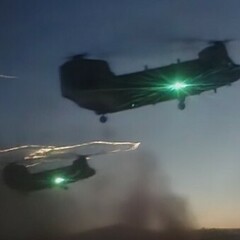


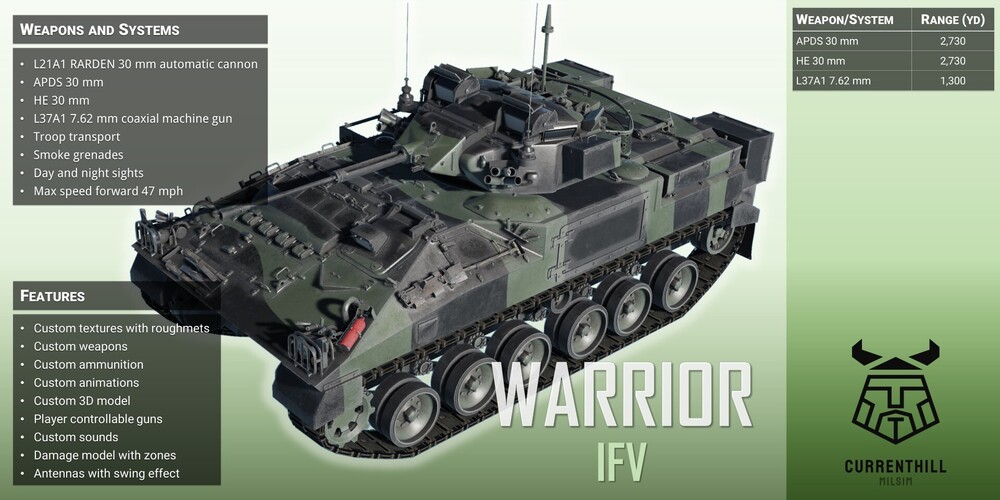
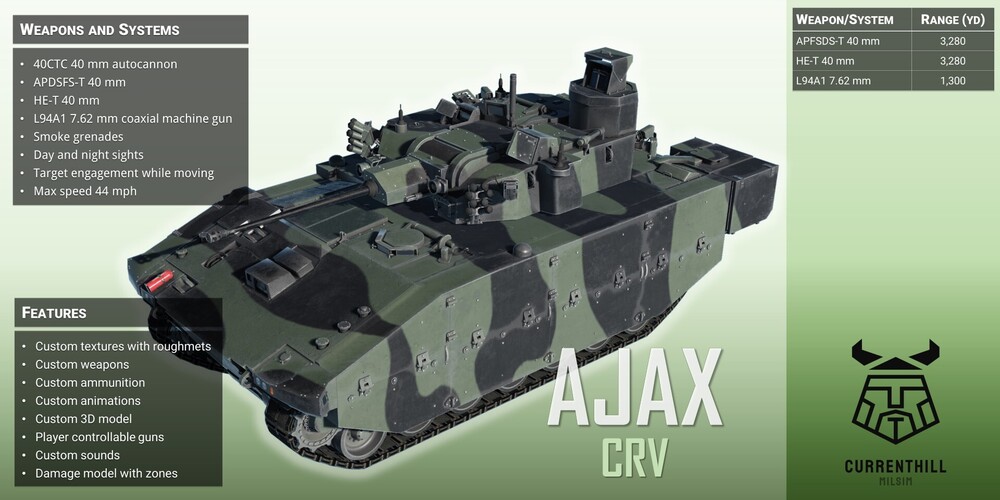




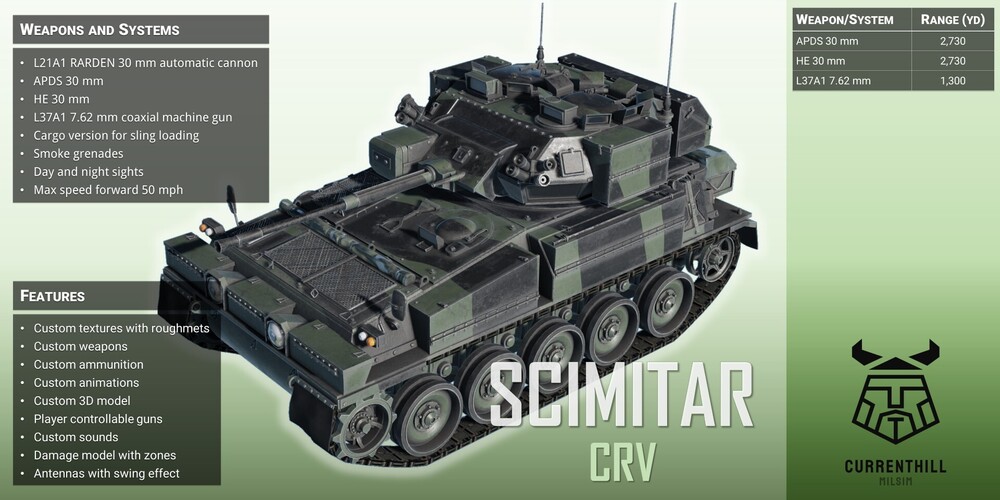

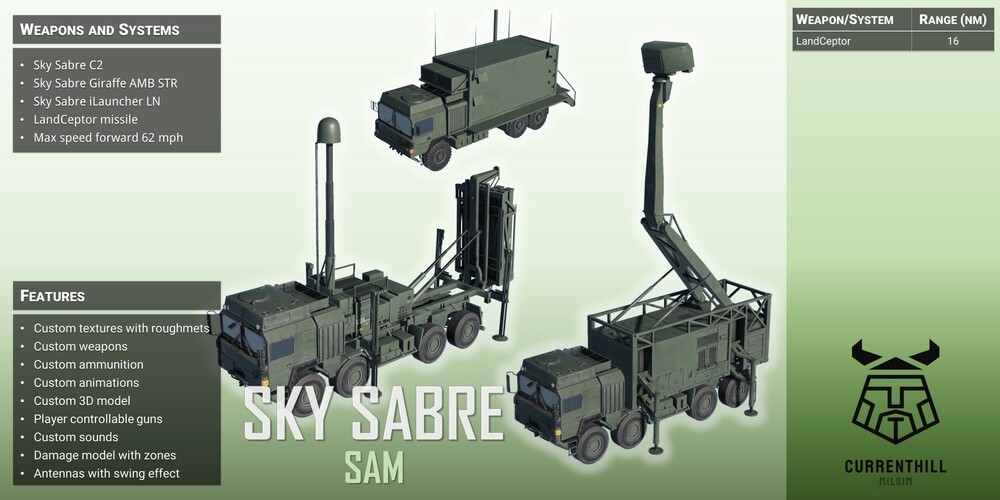
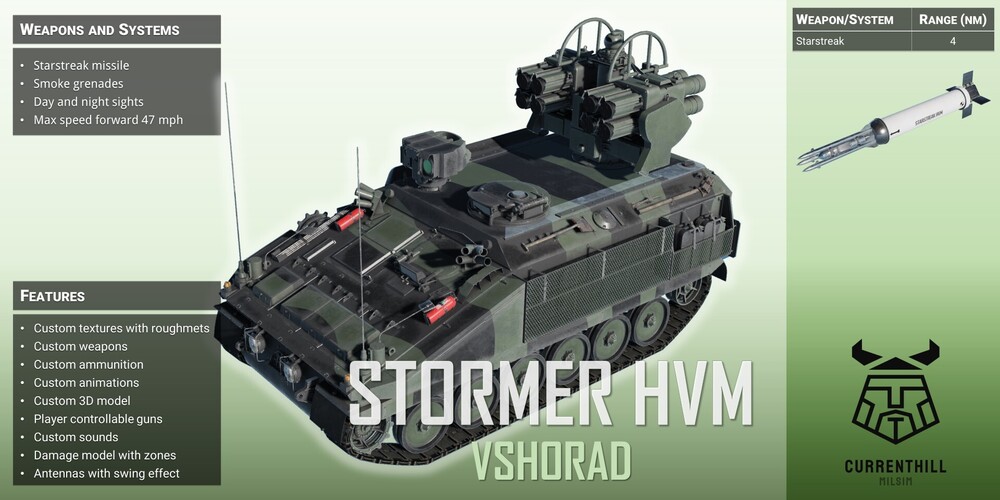
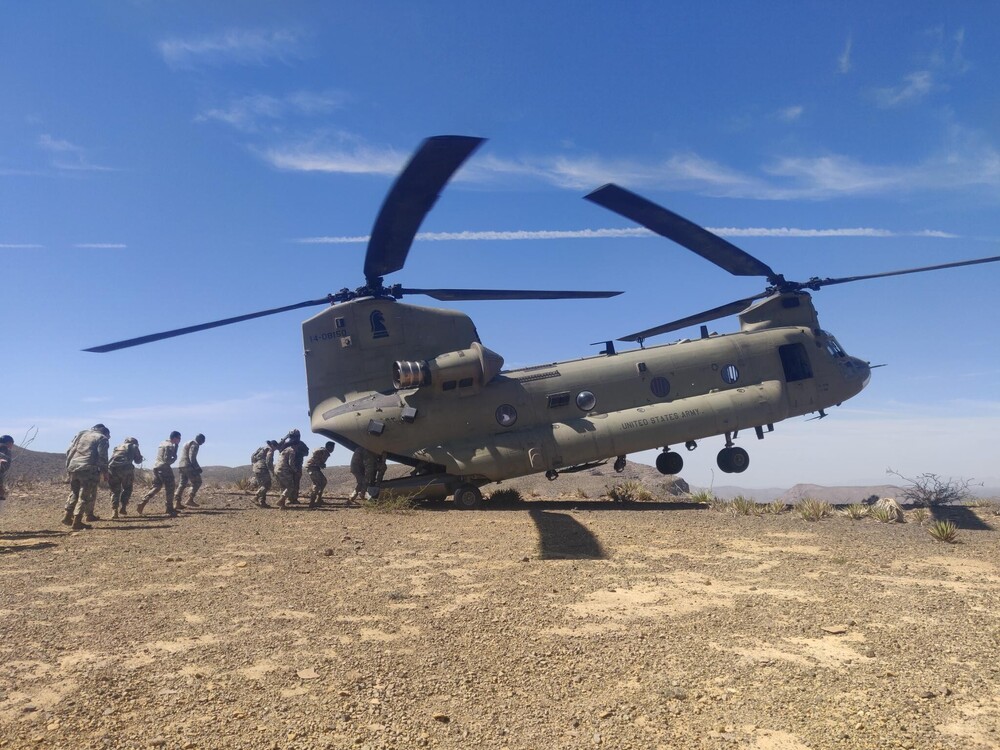
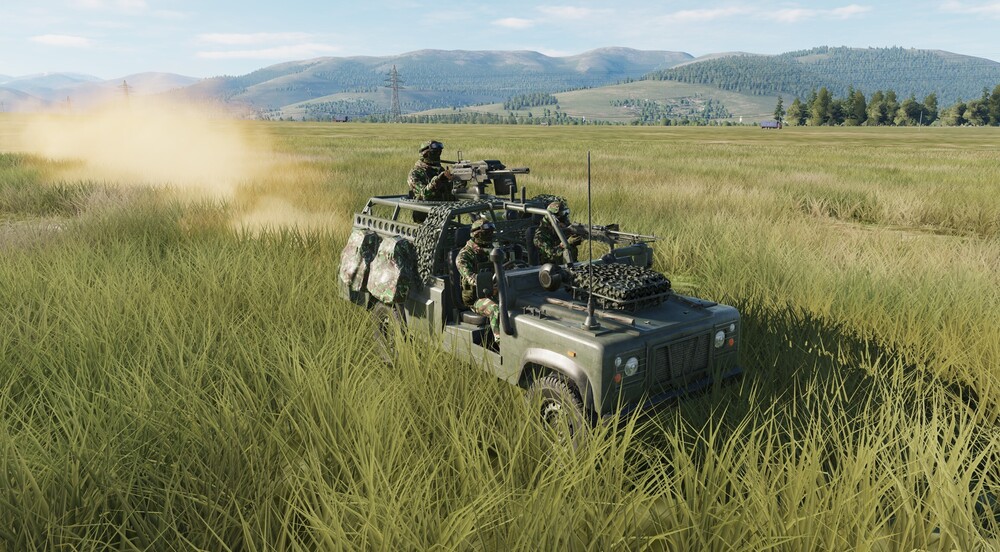
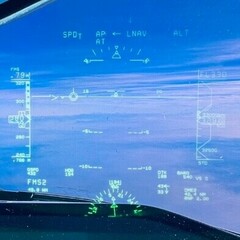
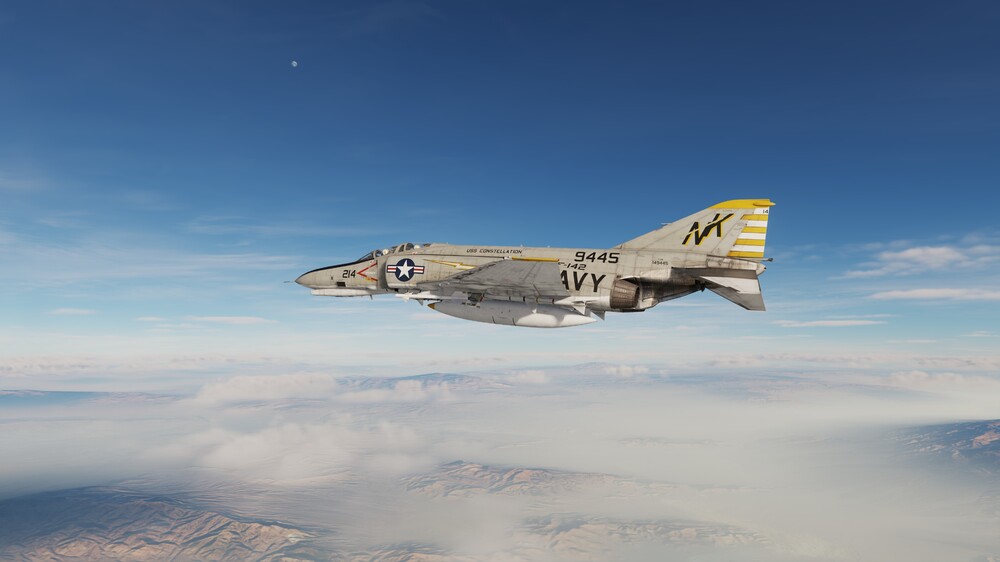

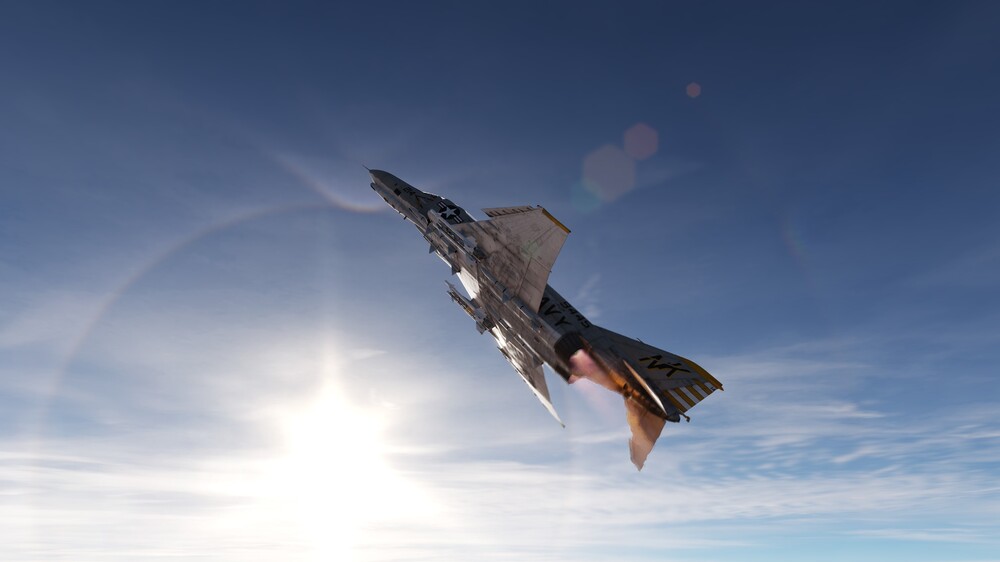
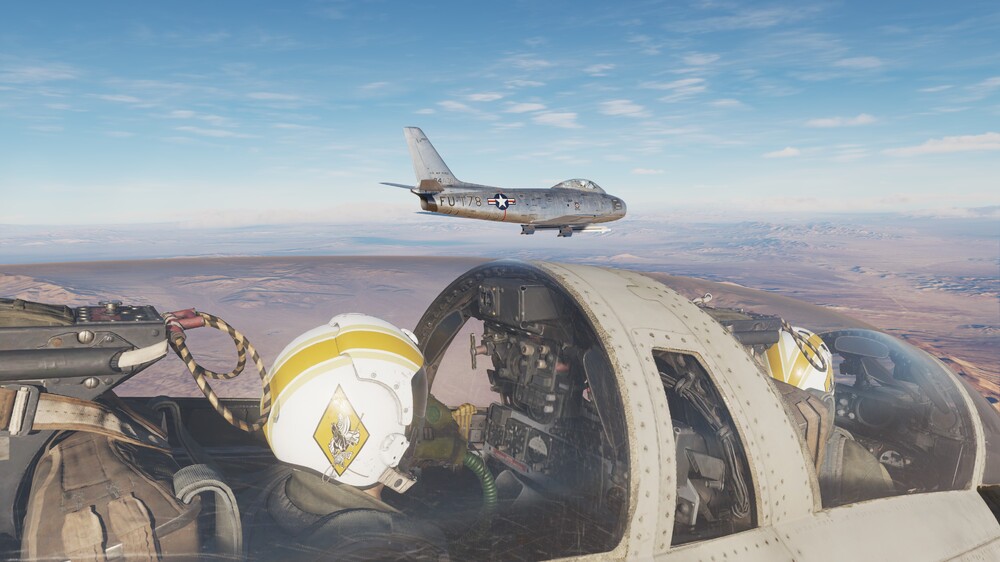
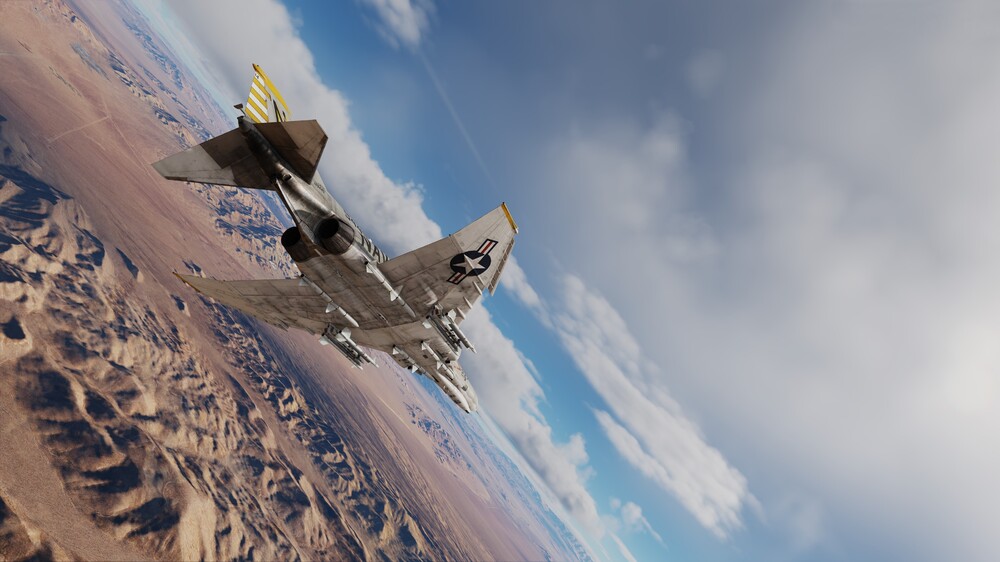
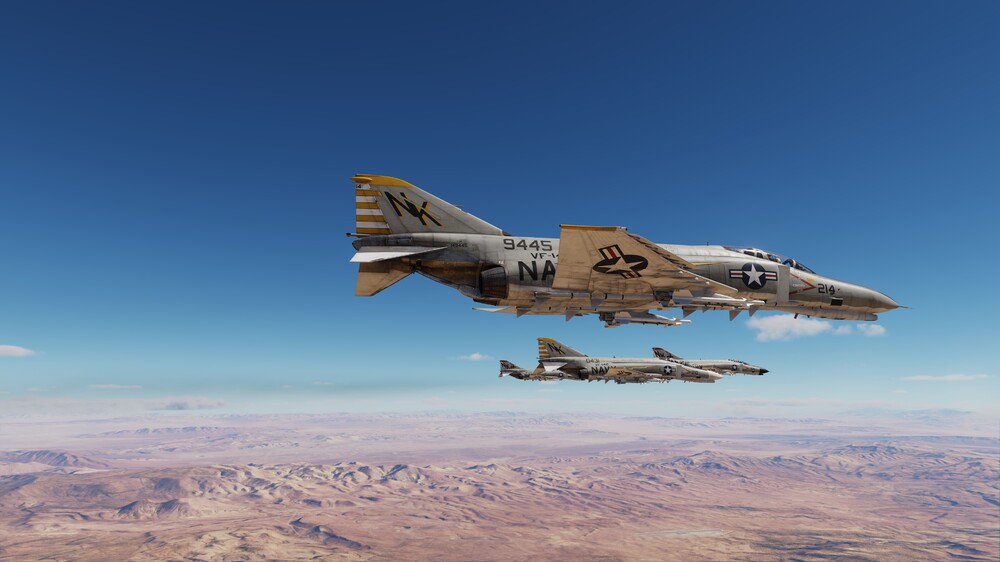
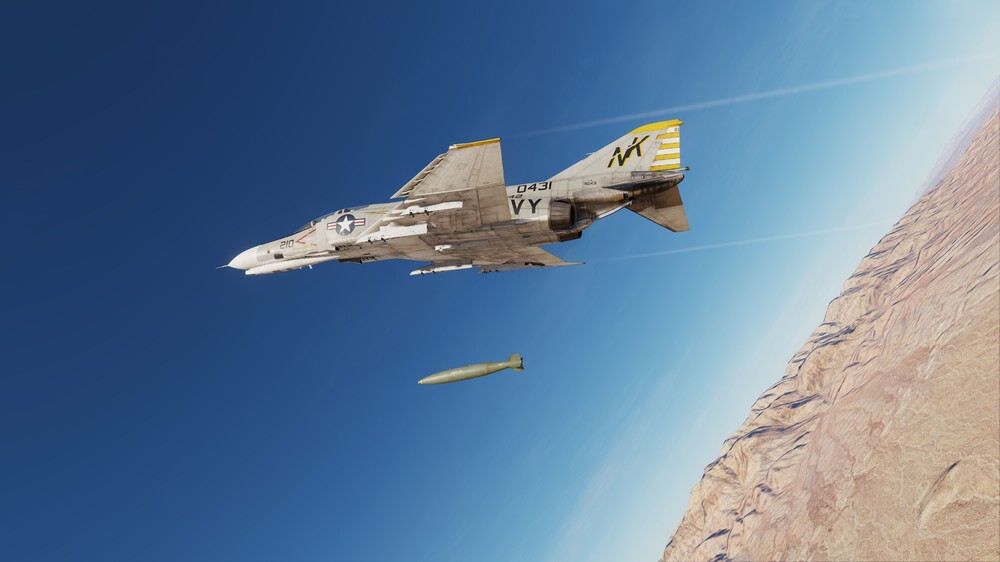





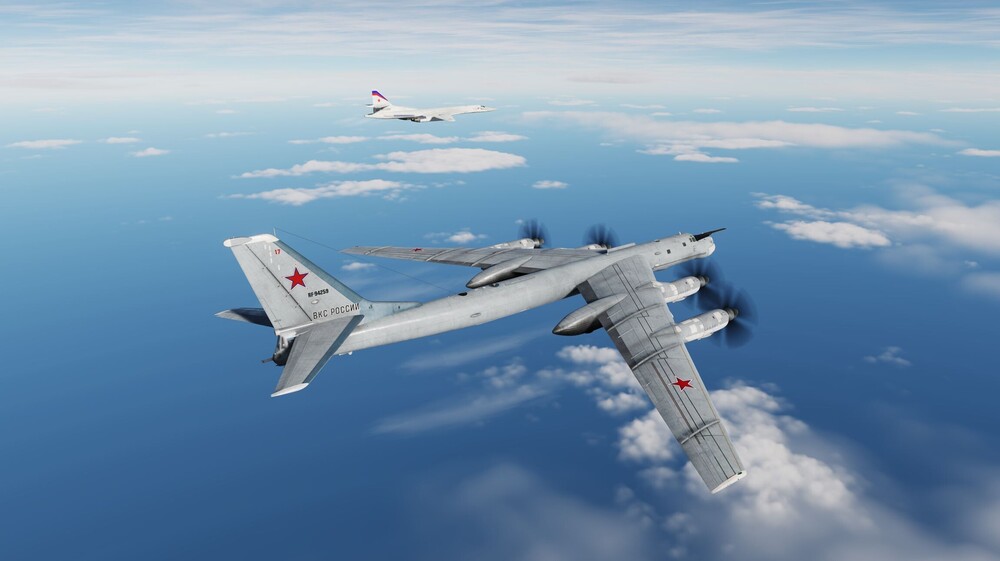
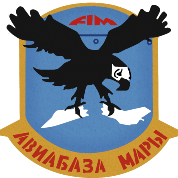
.thumb.jpg.5c3b7f98fdce8dd9c852c3d9f0bc54c4.jpg)

